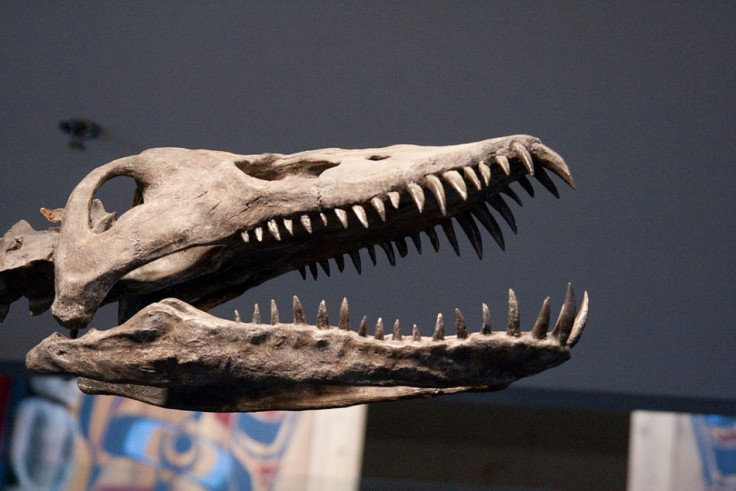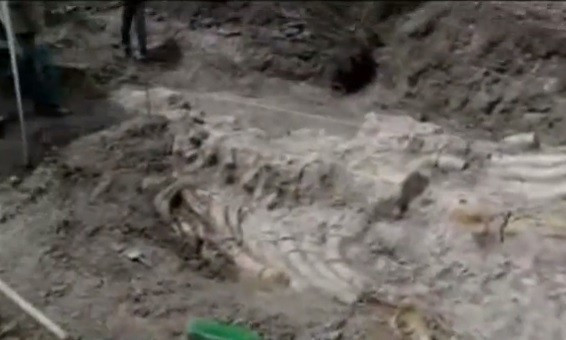130 Million-Year-Old Sea Monster Discovered by Colombian Palaeontologists [VIDEO]

Colombian palaeontologists have discovered a huge sea monster that lived 130 million years ago.
Scientists working in the central state of Boyaca, a landlocked region of Colombia that was thought to have been flooded during the Cretaceous Period, found the fossil.
It belonged to a plesiosaur, a huge marine reptile that lived in the southern ocean when the planet was much warmer than it is today, reported New Tang Dynasty Television.

Palaeontologist Maria Paramo said: "This animal lived approximately 130 million years ago. At that time, almost half of Colombia had a gradual marine flooding that lasted, in the west, until the end of the Cretaceous Period."
The plesiosaur measured eight metres (26ft). Similar fossils have been found in Australia, North America, northern Europe and Antarctica.

Plesiosaurs were predators that hunted fish. They could grow up to 15 metres in length and had flat broad bodies with a small tail. Their limbs evolved to have four long flippers powered by strong muscles.
They lived from around 204 million years ago and became very common during the Jurassic Period but were wiped out 66 million years ago during the Cretaceous-Paleogene mass extinction.
Plesiosaurs were among the first dinosaur fossils discovered by palaeontologists. Since the early 19th century more than 100 specimens have been discovered.
© Copyright IBTimes 2025. All rights reserved.






















